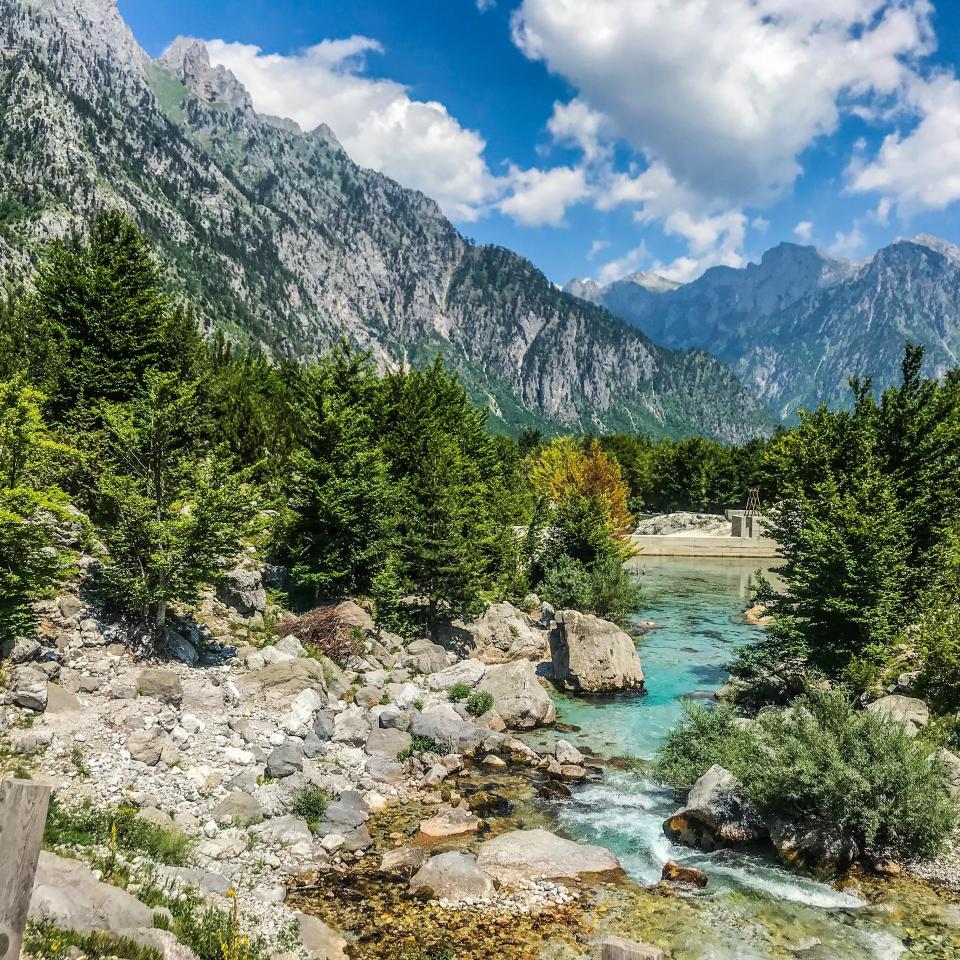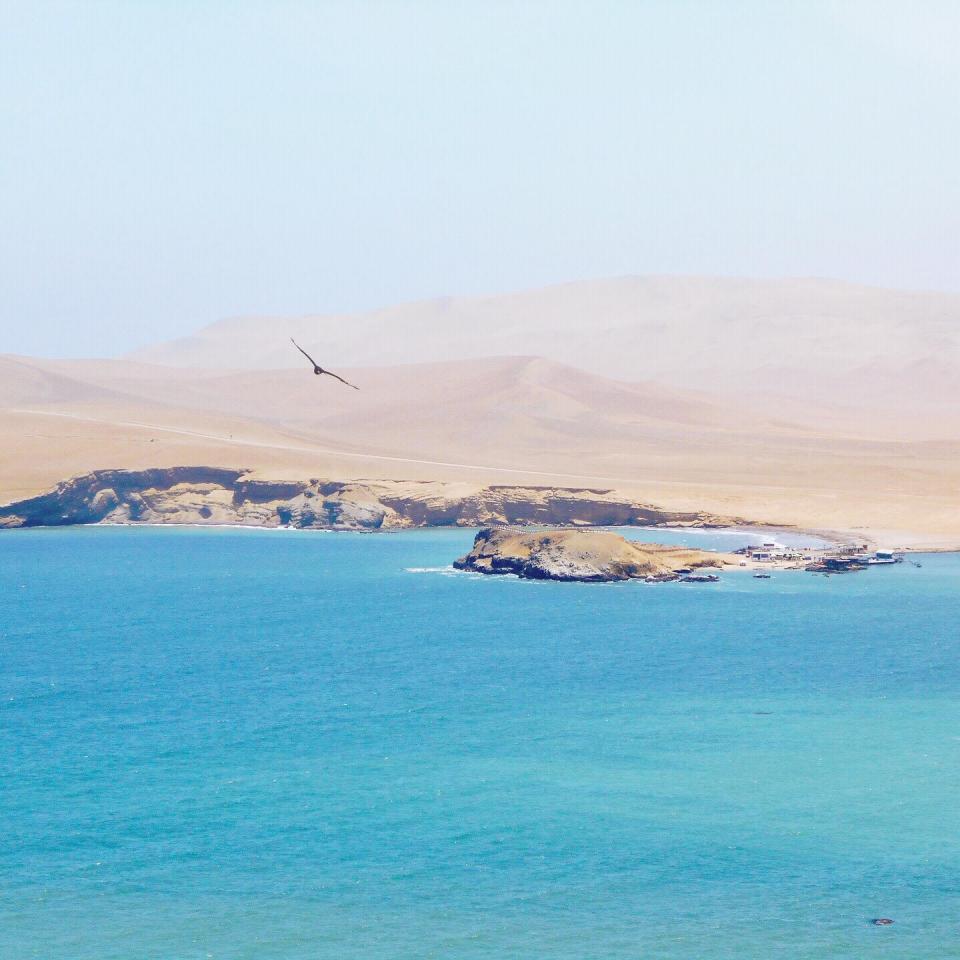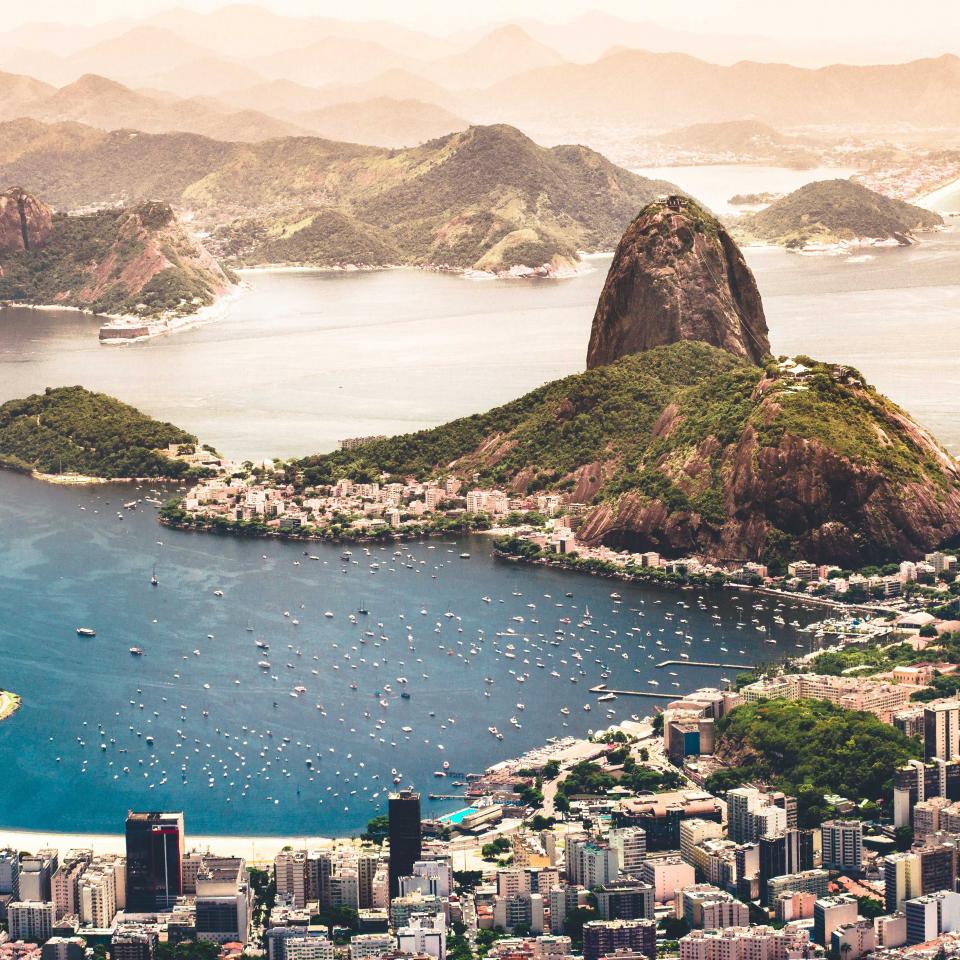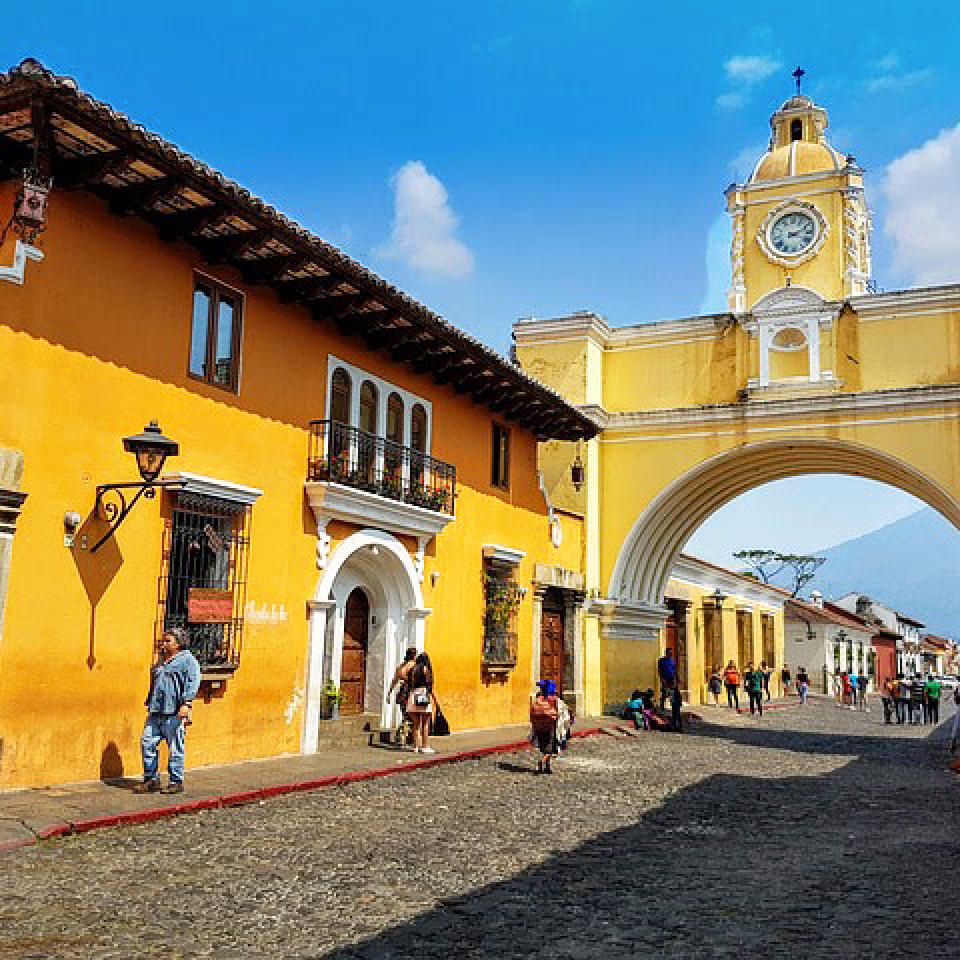As the ideal launch pad for exploring the UNESCO World Heritage site of Machu Picchu, the Sacred Valley and Rainbow mountain, Cusco receives millions of backpackers and adventurers every year. But Cusco has so much more to offer inside of the city. With its cobbled streets, romantic Plaza de Armas, striking churches, bustling markets, live music and plentiful restaurants that cater for everyone needs, it is easy to get a little stuck in Peru''s 'second city'.
Go Travel and Talk Top Tip: Cusco sits at an elevation of 3399m (11,152ft), so make sure you take some time to acclimatise by taking it slow on your first few days. Make sure you drink plenty of water and Coca tea or at least chew on the leaves ~ it really helps with the headaches. As a preventative for the altitude, head to any pharmacy in Peru and ask for Sorojchi tablets. These really help with the symptom of altitude sickness.
Bus:
There are many buses going to and from Cusco, however the main services arriving into Cusco depart from Arequipa, Puno and Lima. Bus companies that service these lines are:
- Cruz del Sur: multiple destinations from Cusco: including Arequipa, Lima
- CIVA: Connects Cusco directly with Lima, Arequipa, Abancay, Ica and Nazca.
- Oltursa: Connects Cusco directly with Lima, Arequipa, Abancay, Ica and Nazca.
- Tepsa: Connects Cusco directly with Lima, Arequipa and Abancay
Taxi:
The main bus station is the Terminal Terrestre which is located 10 minutes by taxi from the historical centre of Cusco in the Santiago District. However, some bus operators have their own stations, such as Cruz del Sur. Use Maps.me to locate them. The station can be a little overwhelming due to the amount of tour operators, tourists and touts, but it is very well sign posted and easy to navigate. Please be aware that after purchasing your bus ticket, you must pay a tax for using the bus station, this is called TAME tax. You will see a small wooden booth in the middle of the station where you can pay for the tax (S/.1 / €0.30 / $0.40) and the attendant will give you a tax sticker as proof of payment.
Combi:
If you didn’t want to take a taxi from your hostel to the main terminal Terrestre station, you need to jump in a combi which will cost you around S/.0.70 (€0.18 / $0.20). You can catch a combi from any of the main streets, but ask your hostel for advice on exact location. Be careful with these and keep an eye on your belongings.
Flying:
Alejandro Velasco Astete International Airport is located within the city of Cusco. Flights to La Paz in Bolivia go to and from here as well as domestic flights to other parts of Peru. Carriers include: LAN, Avianca, Star Peru and Peruvian Airlines. You will need to take a taxi here which will cost S/.20 (€5 / $6), if not a little less.
Everywhere is walkable, but Cusco is a big city, so if you did not feel like walking, there are plenty of taxis and combis (mini vans) whizzing around the streets. There is also a license taxi rank on the main Plaza de Armas (main square).
Head to the culture hub of Plaza de Armas and look out for people in red t-shirts. The walking tour will take you all around the historical centre, discovering hidden gems, offering interesting insights and tasting some local delicacies. A great way to learn about this mesmerising city.
Cost: Free but donations welcome at the end.
Cusco has lots of markets but it is well known for San Pedro market ~ a market bursting with colour and energy. Filled to the brim with fresh fruit, vegetable and meat stands, this place is a hive of activity. Open every day, from around 9am to 5pm, but head there early to pick up the fresh produce or go for lunch, a two course menu costs as little as S/.5 (€1.30/$1.50) You will find bags of coca tea here to help with altitude sickness, one bag costs around S/.1 (€0.26 / $0.30).
Cusco is a haven for shoppers. Whether it is souvenirs you are after, or trinkets, alpaca jumpers, hand-woven scarfs or camping gear, Cusco has it all. Head to Plaza de Armas and explore the streets around it where you will find plenty of indoor markets. Don’t miss Centro Artesanal on Avenida El Sol which is around a 15 minute walk from the central square.
What better way to unwind after seeing the world wonder of Machu Picchu than partying hard? Well Cusco has everything you need to blow off some steam, known as the party capital of Peru. Start you night at the famous and backpacker favourite Irish bar right on Plaza de Armas, Paddy’s Irish Pub and end your night dancing to the electronic beats of Mama Africa, before stopping at a street food vendor for a night time snack ~ choose wisely though, quite often the meat/food has been sat outside all day!
The Moray Ruins is an archaeological site based outside of Cusco. Designed and created by the Incas, no one knows what the concentric terraces were used for. Some speculate it was an agricultural experiment as there are different weather conditions at each level and a huge difference of 15 °C from the bottom to the top terrace. Perhaps the Incas were testing out the conditions crops did well under? Who knows, but it is definitely worth a visit and as these ruins are relatively unknown, they are not overrun with tourists, so you can explore it all to yourself.
You can book a tour or easily go by yourself. You could take a taxi to Moray although it will cost you S/.160 (€40 / $50) return trip or you can take a collectivo / bus to Urubamba or Ollantaytambo and ask the driver to drop you off in Chinchero. Here you can see some Incan ruins before hiking or biking for 2.5 hours to Moray.
The Sacred Valley is a huge area that lies 32km from Cusco’s centre. Most visitors start in Pisac before continuing to Urubamba and Ollantaytambo, where it is possible to catch the train to Machu Picchu. You can take a direct bus from Cusco to Urubamba for as little as S/. 3 (€0.80 / $0.90). The Sacred Valley is home to many majestic Incan ruins as well as agricultural terraces, salt mines and impressive sculptures.
Maras Salt mines: Within the Sacred Valley, you will find the Maras Salt mines. Located deep in a red rock canyon, the Maras Salt mines are fed by a nearby stream and used by local families to harvest salt, each of who have their own salt pool.
Rainbow Mountain, also known as Vinicunca or Montana de Siete Colores should be firmly on your Cusco itinerary ~ make sure you bring those altitude sickness tablets though as heights reach 5,200m (17,060 ft).
There are mixed reviews about this trek, some think it is magical others think it is a tourist trap. I say, make your own mind up. You will need to book with a local tour operator or through your hostel. Expect to pay anywhere between S/.80-130 (€20-35/ $20-40) with breakfast and lunch included. You will be leaving super early in the morning, around 3am, as it is a 3 hour drive to Rainbow mountain ~ I would suggest packing your travel pillow! After a hearty breakfast you will begin your accent, which it is not for the faint hearted because of the altitude and changing weather conditions. Make sure you also pack layers as the temperature quickly switches from beautiful sunshine to extremely cold winds. In total the trek will take 6 hours, round trip.
There are many tour operators who do this trip, I have been recommended ExploorPeru and G-Adventures, but do your research before embarking on this hike. The colours, the scenery and the difficultly, actually make it a pretty incredible experience, but it is VERY touristy, and you will be hard pushed to get a photo without a stranger in the frame. If walking is not for you, you can hire horses for S/.60-80 (€15-20 / $20-25 ) round trip but again, take precautions against the altitude: chewing coca leaves really helps.
There is an alternative to Rainbow mountain which is less touristy and a little easier. The ascent is only 1 hour, climbing from 4780m to 5000m (15,680-16,400 ft). You can clearly see the colours of the surrounding mountains and the red valley below. You will most likely be the only group up the top, less exhausted and be able to enjoy the most incredible views. ExploorPeru is often recommended to me.
Machu Picchu, “The Lost City of the Incas” is why most people flock to Cusco. This world wonder site receives over 1 million visitors per year.
Machu Picchu can be explored in several ways: via the famous Inca trail, the Lares trek, the Jungle Adventure tour or the 5-day Salkantay trek. Prices vary depending on which trek you choose and you can pay anywhere between $180 (€155) to over $1,000 (€865). N.B When booking tours in Cusco, everything is done in USD dollars.
If you are not a hiking fanatic or you are tight on time and money, you can see Machu Picchu in 1 or 2 days with minimal walking and without a guide, see below for details. Cost around $150-200 (€130-173).
What to bring to Machu Picchu:
- Passport / tickets and any required documentation
- Money for passport stamp / food / water / souvenirs
- Coca tea / leaves / Sorojchi tables (bought in Cusco)
- Sunscreen / hat
- Cardigan or jumper ~ it can get chilly up the top of Machu Picchu
- Waterproofs in case it rains
Machu Picchu is based high in the Andes mountains, sitting at 2430m (7,972ft). To reach the UNESCO world heritage site, you need to head to Aguas Calientes, a small town at the bottom of Machu Picchu. As this town is not reachable by car, you must use a combination of methods.
Step 1:
- Take a bus / private car / collectivo from Cusco to Hidroelectrica. This takes around 6 hours and will cost you around S/.100 (€26 / $30) depending on what mode of transport you choose.
Step 2:
- The transport will drop you off at Hidroelectrica train station.
Step 3:
- From here you can either walk along the famous train tracks to the town of Agua Calientes (3 hour walk, completely flat) or catch the train. The train takes 45 minutes and will drop you off right in the centre of Agua Calientes. You need to buy the tickets from Peru Rail at the respective stations, Hidroelectrica or Aguas Calientes. A one way ticket will cost you S/.103 (€27 / $31).
Step 4:
- You can either visit Machu Picchu first thing in the morning, the gates open at 5am to start climbing the stairs with the first entrance beginning at 6am; or in the afternoon, the second wave of people are allowed entrance from 12pm. Go Travel and Talk suggests spending a night in Aguas Calientes if you are coming from Cusco, although you can do it in a day which means leaving Cusco at 4am to get the afternoon slot at Machu Picchu. NB: You must buy your tickets online beforehand, you CANNOT buy them at the gate and the tickets are limited to 2500 guests per day. If you want to climb Huayna Picchu or Machu Picchu Mountain (Montana Machu Picchu, you will need to buy those tickets online as well – SEE BELOW).
Go Travel and Talk Top Tips:
- Stay in Aguas Calientes and rise early (4am), heading to the bridge for 5am when the gate opens (get there a little early if you can, as there will be queue of people). The walk to the bridge takes 15 minutes and then you start the climb of over 3,000 steps to reach Machu Picchu (1 hour). This is a magical experience because as you are climbing as the sun is rising over the mountain range. But if you don’t want to walk up the steps, you can take a bus from Aguas Calientes.
- If you know you will take the bus up to Machu Picchu, book your tickets in Cusco. The lines in Aguas Calientes to buy the bus tickets can be long. Also, pack light and leave your big bags in Cusco / Aguas Calientes. The baggage storage at Michu Picchu can be expensive and the ONLY accept smaller packs.
Once up the top, you need to present your ticket here before entering. There is a place to leave your bags. NB: If you need to bathroom, go before you get in the line. There are no toilet facilities passed the ticket point. Also, have your food now, it is forbidden to eat inside the site. From your point of entry, you have around 4 hours to explore Machu Picchu and you are going to need it as there is A LOT of ground to cover!
Step 1:
- Walk back down the steps, along the train tracks and back to Hidroelectrica to catch a bus to Cusco (around 6 hours).
Step 2:
- Or take a bus from Machu Picchu, by the ticket office and bathrooms, back to Aguas Callientes, catch the train from Aguas Callientes to Hidroelectrica and then take a bus back to Cusco.
Please note: As an alternative option you can take a train from Cusco (head to Poroy station, 25 minutes drive away) to Ollantaytambo and on to Aguas Calientes. The train ride in total takes 3.5 hours. After you have climbed Machu Picchu, you can then take the train from Aguas Calientes back to Ollantaytambo/onto Poroy. I would strongly advise visiting Ollantaytambo, it is a beautiful little village in the Sacred Valley on the Urubamba river and home to magnificent Incan ruins and the Sun Temple.
Huayna Picchu: Overlooking Machu Picchu, at 2,700m (8858ft), this mountain peak offers panoramic views of Machu Picchu. The climb only takes 1 hour, but it is a tough climb. You must book this trek when you book your Machu Picchu tickets.
Machu Picchu Mountain / Montana Machu Picchu: This is an additional trek which takes around 1.5 hours to reach the summit (3,082m / 10,111ft), again, offering unparalleled views of Machu Picchu and the surrounding mountain ranges. Unlike Huayna Picchu, this trek is very well marked with fairly stable accents, however, the closer you get to the based of the mountain, the tough the climb becomes. You must book this in combination with your Machu Picchu ticket and show upon entrance to the site.Visit the site for more information.
We recently created a Video Travel Guide for the 5 Day Salkantay Trek! Check it out here!
Kokopelli Hostel is located a 2-minute walk from the Plaza de Armas in an old colonial house with a gorgeous courtyard and outside space. They offer large bedrooms, a bar and knowledgeable staff. Kokopelli is a backpacker favourite and this hostel has a lot to offer. With a great atmosphere and a slight party vibe, this hostel provides a really good space to meet other backpackers. They also have a tour operator on site with very reasonable prices. Strongly recommend. Cost: S/.40 (€10 / $12) per night for a 10 bed dormitory. They have other hostels in Lima and Paracas where you can get discount if you have stayed with them in another city in Peru.
Don't forget to follow them on Instagram: @kokopellihostels
Intro Hostel is further away from the Plaza de Armas than Kokopelli and it has a much more chilled vibe. Intro hostel attracts serious hikers and those not looking to party. They do have a bar, but it closes at 11pm. They offer super comfy beds and a nice breakfast included in the price. Intro hostel is a great place to stay when preparing for a big hike, or when recovering from a big hike ~ they have a tour operator on site. The staff are super friendly and there are plenty of beanbags to relax on. Cost: S/.35 (€9 / $11) per night for 6 bed mix dormitory.
Don't forget to follow them on Instagram: @introcusco
Street Food:
- Empanadas, pork sandwiches, fresh fruit smoothies, choclo con queso (boiled corn on the cob slathered in cheese) and Tamales (boiled corn made into a paste filled with chicken or pork).
Local Food:
- Cuy (guinea pig) is a Peruvian delicacy that holds historical importance. It is often roasted and comes to the table whole and looking exactly like a guinea pig ~ not for me thanks. Alternatives for the meat eaters include alpaca steak which is served throughout Cusco.
Vegetarian/Vegan Food:
- Head straight to Green Point restaurant. Any veggies, vegans or open minded meat eaters who have passed through Cusco will recommend you to go here, and I 100% understand why! Head there from 12pm to enjoy their lunch menu for S/.15 (€4 / $4.50 ). You get a self service salad and a soup as a starter, a main, a desert and a gorgeous drink of some sort ~ ridiculously cheap for what you get ~ I would advise sharing between two on the sly. The staff are super impressive and knowledgeable and really know their stuff (see picture above)
- Check them out on Instagram: @greenpointveganrestaurant, and get ready to drool!
- Go Travel and Talk TOP TIP: On maps.me there are two Green Points! Make sure you head to the one up from Plaza de Armas, close to the Museo de la Coca and Antigua Casona San Blas;
Word of warning: I suffered food poisoning very badly in Cusco and I met a lot of other people who did too. Make sure you go to a decent restaurant that is busy. I went to a super cheap little place down a dark alley ~ probably not the best idea. If you have a strong stomach I am sure you will be fine, but please be mindful when choosing what to eat.
The Kusi Kawsay Association is a beautiful initiative based in the Sacred Valley, Pisac, 50 minutes outside of Cusco. With a focus on cultural education and agriculture, the Kusi Kawsay organisation seek to empower indigenous communities through the creation of schools, workshops, activities, cultural centres and community projects and they are doing phenomenal things.
You can volunteer in many different ways from teaching English, to helping with manual labor in the gardens and on the farms, to assisting with their social media and marketing or helping more with their strategy, fundraising etc.
Cost: The Kusi Kawsay Association ask for $25 per day but this is dependent on what you do and for how long you stay. In some cases, as long as you pay for food and accommodation, you can help for free and it is an incredible experience.
Check out their volunteering page for more information, or send them an email info@kusikawsay.org
Awamaki is a non-profit organisation based in Ollantaytambo (2 hour drive from Cusco), working with indigenous women to turn their textiles into sustainable businesses.
At Awamaki you have the opportunity to volunteer from 3 weeks to 1 year. Volunteers who come from 3-9 weeks are considered part of their Service Travel Program, and are usually only accepted if Awamaki have a specific, short-term project in mind that the volunteers are a good fit for. Their traditional volunteer program requires a 10+ week commitment. Their volunteers can work in any of the following areas of the organisation: marketing & communications, monitoring & evaluation, product design, sales, or sustainable tourism.
Please note, this volunteering opportunity costs $1460 for the 3 week placement, and additional costs thereafter. But airport transfers, accommodation and food are all provided and it is a truly life changing experience. All money goes straight back to the organisation and helping the indigenous communities.
Go Travel and Talks Emma Burzycki decided to do both, here is her account:
"Once you arrive at Awamaki one of the full time American staff members of Awamaki will meet you in the main Plaza and bring you to either your homestay or the volunteer house. I was definitely apprehensive at first about staying with a local family as I spoke very little Spanish, but I can honestly say choosing to stay with a host family was the best decision to help me get acclimated to not only the town but also speaking Spanish. While living with my host family, I was given 3 meals and snacks a day, my own bedroom, hot showers, and keys to the house as well as my bedroom. My homestay had one of the towns community ovens and many mornings I would wake up to fresh tamales from Pancha’s, my host mom, friends who had come to use the oven. This was a surreal experience, as I got to see how tightly knit and selfless the locals of Ollantaytambo truly were. After my two weeks in my home stay I moved into the volunteer house. At Awamaki, the current volunteer house is a very modern 3-story house with two living rooms and a communal kitchen as well as access to a rood with breathtaking views. Each room in the volunteer house has one to two sets of bunk beds and its own bathroom, which you’ll be thrilled to hear, has hot water. Whether or not you have your own room or a roommate will depend on the time of year that you volunteer.
Included in your volunteer fee, you will have 10 Spanish/Quecha lessons, food, accommodation, transport from the airport to Ollantaytambo and a 3-day 2-night weaving immersion in Patacancha. This experience was truly remarkable and I wouldn’t change anything about it. Not only are you making a difference, but you’re also given a great schedule with Friday-Sunday off giving you lots of flexibility to travel."
You can apply to volunteer through the website or contact the team for additional information at: volunteer@awamaki.org.






